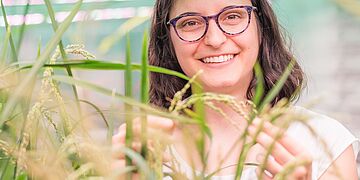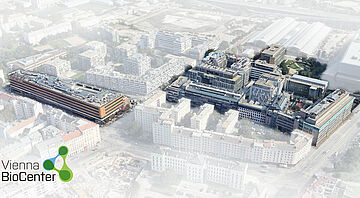Autophagosomes first form as cup-shaped membranes in the cell, which then grow to engulf the cellular material designated for destruction. The formation of these membranes is catalyzed by a complex machinery of proteins. “We have a very good knowledge of the factors involved in autophagosomes formation”, explains group leader Sascha Martens, “but how they come together to initiate the formation of these membranes has so far been enigmatic”.
One of the factors is Atg9, a protein whose importance in the process was known, but whose role was not clear. Atg9 is found in small intracellular vesicles. Researchers Justyna Sawa-Makarska, Verena Baumann and Nicolas Coudevylle from the Martens lab now show that they form a platform on which the autophagy machinery can assemble to build the autophagosome. “Atg9 vesicles are abundant in the cell, which means they can be rapidly recruited when autophagosomes are needed”, explains group leader Sascha Martens.
Cells encapsulate cargo in vesicles, so that they can be correctly transported and degraded in a chemical environment that is different to the one normally found in cells. Autophagosomes therefore consist of a double membrane made of phospholipids. This greasy envelope creates a waterproof package that separates material from the aqueous surroundings of the cell and marks it for degradation. However, Atg9 vesicles do not supply the bulk of the lipids to the growing autophagosome. Where does the material for this membrane then come from? The scientists have also found a possible answer to this question: “We could show that Atg9 vesicles recruit lipid transfer proteins”, says Sascha Martens. These proteins bridge the growing Atg9 vesicles to the endoplasmic reticulum (ER). In this way, lipids are transferred from the ER to the emerging autophagosome, so that it can grow in size.
To understand a complex machinery like the cell, it often helps to take it apart and rebuild it. The biogenesis of autophagosome involves numerous proteins. By isolating and characterizing 21 of these components, the scientists have been able to rebuild parts of the autophagy machinery in the ‘test tube’ – an arduous process that took Sascha Martens and his team almost ten years. “With this approach we could reconstitute the early steps of autophagosome biogenesis in a controlled manner”, he says. With the elaborate toolkit the Martens lab has developed, the scientists now aim to unravel the next steps in the biogenesis of the autophagosome. The research project was a collaboration of the Martens lab with Gerhard Hummer and Soeren von Bülow from the Max Planck Institute for Biophysics in Frankfurt and Martin Graef from the Max Planck Institute for Biology of Ageing in Cologne.
Publication:
Justyna Sawa-Makarska, Verena Baumann, Nicolas Coudevylle, Sören von Bülow, Veronika Nogellova, Christine Abert, Martina Schuschnig, Martin Graef, Gerhard Hummer und Sascha Martens: Reconstitution of autophagosome nucleation defines Atg9 vesicles as seeds for membrane formation. Science 2020
https://science.sciencemag.org/cgi/doi/10.1126/science.aaz7714



